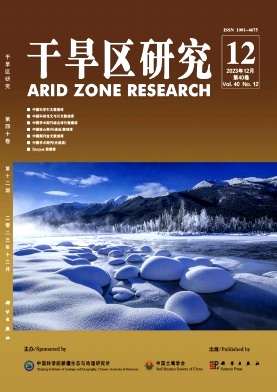Distribution Patterns and Climatic Explanations of Species Richness of Vascular Plants in Xinjiang,China
Q3 Environmental Science
引用次数: 3
Abstract
Distribution patterns of biodiversity at large scale and their affecting factors are one of the focal issues of ecology. Xinjiang is located in an extremely arid area in northwest China,where there are ideal places to explore the distribution patterns of species richness and their affecting factors under extreme conditions because of the complicated topographical and climatic conditions and the diversity of habitats. In this study,the relationships between the distribution patterns of species richness of vascular plants and the climatic factors in Xinjiang are analyzed based on the available data of vascular plants and climatic factors. The results reveal that the species richness increases with the increase of annual precipitation (AP) and actual evapotranspiration (AET),and the curve of species richness of vascular plants with the increase of MAT and PET is unimodal. In all the subregions,species richness increases significantly with AP. Species richness patterns with the increase of MAT are different in the mountains and basins,it increases at first and then decreases with the increase of MAT in mountains,but decreases monotonically in the basins. At different water deficit (WD) levels,the increase rate of species richness is decreased with the increase of AP at high WD. Species richness increases with the increase of MAT at low WD level but decreases at high WD level.新疆维管植物物种丰富度的分布格局及气候解释
大尺度生物多样性分布格局及其影响因素是生态学研究的热点问题之一。新疆地处中国西北极端干旱地区,地形气候条件复杂,生境多样,是探索极端条件下物种丰富度分布格局及其影响因素的理想场所。利用新疆维管植物资料和气候因子,分析了新疆维管植物物种丰富度分布格局与气候因子的关系。结果表明:物种丰富度随年降水量(AP)和实际蒸散量(AET)的增加而增加,维管植物物种丰富度随MAT和PET的增加呈单峰曲线;在所有亚区,物种丰富度都随着AP的增加而显著增加。随着MAT的增加,物种丰富度在山地和盆地中呈现先增加后减少的趋势,而在盆地中则呈现单调减少的趋势。在不同的水分亏缺水平下,高水分亏缺时,物种丰富度的增加速率随AP的增加而降低。物种丰富度在低WD水平随MAT的增加而增加,在高WD水平随MAT的增加而减少。
本文章由计算机程序翻译,如有差异,请以英文原文为准。
求助全文
约1分钟内获得全文
求助全文
来源期刊

干旱区研究
Environmental Science-Water Science and Technology
CiteScore
2.50
自引率
0.00%
发文量
4294
期刊介绍:
 求助内容:
求助内容: 应助结果提醒方式:
应助结果提醒方式:


